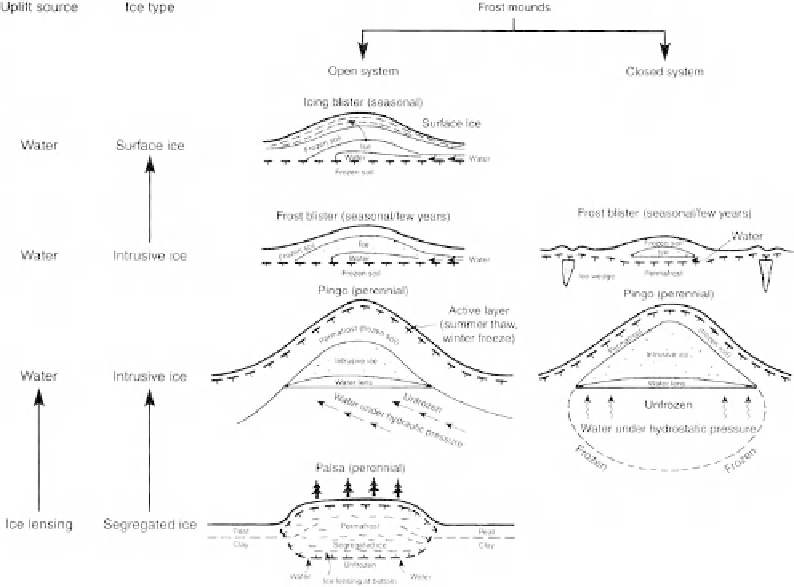Geology Reference
In-Depth Information
2004; Kaab et al., 1997; Kneisel, 2004; Lambiel and Delaloye, 2004). Rheological models
are also being examined (Whalley and Azizi, 1995). Currently, the study of rock glaciers
constitutes a major component of alpine (mountain) permafrost study.
6.5. FROST MOUNDS
Various types of frost mounds occur in permafrost regions. They can be distinguished on
the basis of their structure and duration, and by the character of the ice contained in them.
Figure 6.11 summarizes the different types in terms of their uplift source and ice type.
Certain types of frost mounds are of special interest because they are uniquely permafrost
features. They are also of Pleistocene signifi cance because collapse structures, interpreted
as frost-mound remnants, have been described from many non-permafrost areas of the
world. The latter are discussed more fully in Chapter 12.
6.5.1. Perennial-Frost Mounds
Pingos are perennial, intrapermafrost, ice-cored hills, typically conical in shape, that can
grow and persist only in a permafrost environment (Mackay, 1998). The word “pingo” is
of Inuit origin, used to describe an ice-cored conical hill in the Mackenzie Delta, Canada.
The Russian equivalent is bulganniakh.
Figure 6.11.
The various types of frost mounds and their origin. Modifi ed from Mackay (1986c).
Reproduced by permission of the Canadian Association of Geographers.

